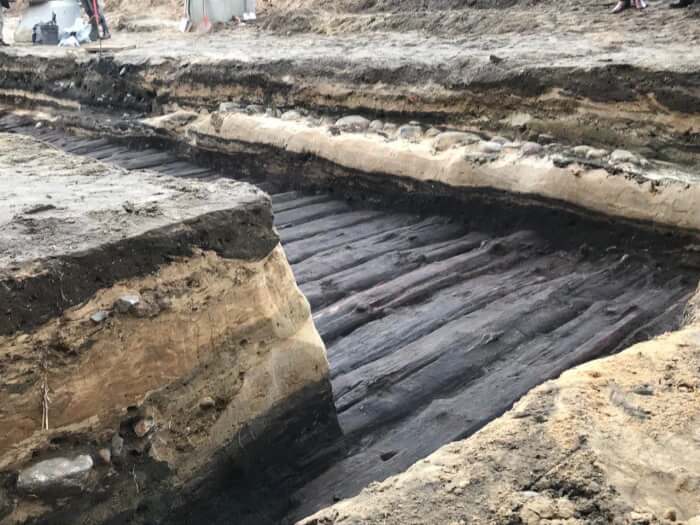Medieval Plank Causeway Found Under Central Berlin Street
Stralauer Straße, located in Berlin-Mitte in the capital of Germany, has a renowned history dating back to the Middle Ages foundation of Berlin. And the medieval trace of the site has recently been revealed with excavations in January 2022 at Molkenmarkt, when archaeologists unearthed a medieval plank embankment roughly 8.2 ft. below the surface.
Klaus Lederer, the German Senator for Culture and Europe, said that the discovery was “a real hit” whose importance must not be understated, while state curator Christoph Rauhut described it as a “really significant find” and Berlin state archaeologist claimed it was a “real sensation.”
Heavy goods and pedestrians were enabled to travel acroos central Berlin without worrying of sinking in the soft ground, thanks to the planks assisting in bypassing the mushy and wet ground near the river.
With a width of 19.6 ft. and length of at least 164 ft., the structure’s planks laid down in three layers. The top layer, dating back to the Middle Ages, includes debarked trunks (to prevent rotting) lying by side across the causeway, laying on three longitudinal parallel beams. Its defects were covered up with small boulders, while the edges were smoothened with sand.
The discoveries included such excellent level of preservation. One was unearthed in Jüterbog, northeastern Germany in 2017, another in the city of Dortmund in 2021, dating back 1000 years with a length of 19.6 ft.
According to Matthias Wemhoff, one of the crucial takeways from the discovery is that the city displayed a dynamic attitude towards expansion and building good infrastructure, backed up by the quality of the causeway. "I didn't expect that we would have such fantastic wood preservation in Berlin and actually find organic material," said Wemhoff.
H/T: The Archaeology News Network
 Source: Landesdenkmalamt Berlin
Source: Landesdenkmalamt Berlin
Klaus Lederer, the German Senator for Culture and Europe, said that the discovery was “a real hit” whose importance must not be understated, while state curator Christoph Rauhut described it as a “really significant find” and Berlin state archaeologist claimed it was a “real sensation.”
Exceptionally well preserved
Oak, pine, birch trunks, trees found in abundance around the outskirts of Berlin were used to made the dam-like structure. During the reconstruction project around Molkenmarkt, the laying of power and gas line unintentionally revealed the embankment. Fortunately, experts were well prepared to carry out quick archaeological method when cases like this occur. Source: Landesdenkmalamt Berlin
Source: Landesdenkmalamt Berlin
Heavy goods and pedestrians were enabled to travel acroos central Berlin without worrying of sinking in the soft ground, thanks to the planks assisting in bypassing the mushy and wet ground near the river.
With a width of 19.6 ft. and length of at least 164 ft., the structure’s planks laid down in three layers. The top layer, dating back to the Middle Ages, includes debarked trunks (to prevent rotting) lying by side across the causeway, laying on three longitudinal parallel beams. Its defects were covered up with small boulders, while the edges were smoothened with sand.
Infrastructure prioritized
Archaeologists have excavated several boardwalks from Middle Ages, often in very good condition, proving that the historically termed “Dark Ages” truly got some things right, in particular road building.The discoveries included such excellent level of preservation. One was unearthed in Jüterbog, northeastern Germany in 2017, another in the city of Dortmund in 2021, dating back 1000 years with a length of 19.6 ft.
According to Matthias Wemhoff, one of the crucial takeways from the discovery is that the city displayed a dynamic attitude towards expansion and building good infrastructure, backed up by the quality of the causeway. "I didn't expect that we would have such fantastic wood preservation in Berlin and actually find organic material," said Wemhoff.
 Source: Landesdenkmalamt Berlin
Source: Landesdenkmalamt Berlin
H/T: The Archaeology News Network
Share this article
Advertisement